Description:
Peripheral Nerve Stimulation (PNS) represents one of the most advanced techniques in the field of Pain Management. PNS is used when nonsurgical and/or surgical options have failed to provide sufficient relief from shoulder, knee, ankle/foot, or groin pain. PNS requires two separate procedures, a “Trial” procedure and a “Permanent Implant” procedure. For the “Trial” procedure, several thin wires are placed along the nerves, transmitting pain signals in an area that bothers the patient. The “Trial” procedure is done in one of our clinics and takes 20-30 minutes to perform; when temporary electrodes have been placed, patients try out the effectiveness of the device from the comfort of their home for a period of 5-7 days. If patients find the device helpful and are satisfied with the result of the “Trial”, then a consultation with a surgeon is arranged to discuss a “Permanent Implant” placement.
Peripheral Nerve Stimulation is an extremely effective way of managing chronic pain in the shoulder, knee, ankle/foot, or groin. When chronic pain is well managed, patients usually experience improvement in their overall quality of life and sleep. Many patients are also able to reduce the need for pain medications.
Conditions Treated:
Peripheral Nerve Stimulation is commonly recommended for patients with the following conditions:
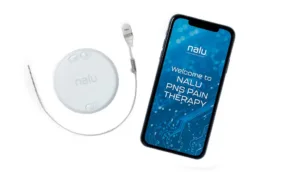
What to Expect:
Peripheral Nerve Stimulation: “Trial” procedure length 20-30min. Patients start experiencing significant pain relief almost immediately following the procedure. Please note that if IV sedation is requested, the patient would need to bring a driver with them on the day of the procedure. Please call us at (912) 910-3777 or send us a web inquiry if you have additional questions about this procedure and how it can benefit you.
Description:
Genicular Nerve Blocks are minimally invasive and highly effective in alleviating pain arising from knee arthritis, prior knee surgery, or knee joint inflammation. This procedure involves the injection of a long-lasting anesthetic around genicular nerves that provide sensation to the knee. If Genicular Nerve Blocks provide significant short-term pain relief, then Genicular Nerve Ablation will be recommended. Genicular Nerve Ablation desensitizes a small area of the nerve tissue using an electrical current, which stops the transmission of painful signals.
Conditions Treated:
Genicular Nerve Blocks and Genicular Nerve Ablation are commonly recommended for patients with the following conditions:
What to Expect:
Genicular Nerve Blocks: procedure length <5min. Patients start experiencing significant pain relief almost immediately. The expected duration of pain relief is several days.
Genicular Nerve Ablation: procedure length: <10min. Patients start experiencing significant pain relief within 2 weeks following the procedure. The expected duration of pain relief is 12 months. If requested by the patient, this procedure can be done with IV sedation. Please note that if IV sedation is requested, the patient would need to bring a driver with them on the day of the procedure.
Description:
Suprascapular Nerve Blocks are minimally invasive and highly effective in alleviating shoulder pain. This procedure involves the injection of a long-lasting anesthetic around a small bundle of nerves that provide sensation to the shoulder joint. If Suprascapular Nerve Blocks provide significant short-term pain relief, then Suprascapular Nerve Ablation will be recommended. Suprascapular Nerve Ablation desensitizes a small area of the nerve tissue using an electrical current, which stops the transmission of painful signals.
Conditions Treated:
Suprascapular Nerve Blocks and Suprascapular Nerve Ablation are commonly recommended for patients with the following conditions:
What to Expect:
Suprascapular Nerve Blocks: procedure length <5min. Patients start experiencing significant pain relief almost immediately. The expected duration of pain relief is several days. Suprascapular Nerve Ablation: procedure length: <10min. Patients start experiencing significant pain relief within 2 weeks following the procedure. The expected duration of pain relief is 12 months. If requested by the patient, this procedure can be done with IV sedation. Please note that if IV sedation is requested, the patient would need to bring a driver with them on the day of the procedure.
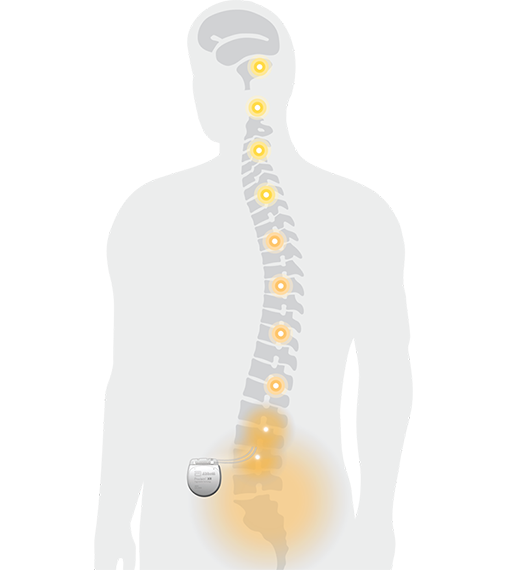
SPINAL CORD STIMULATION (SCS):
Spinal Cord Stimulation (SCS) represents one of the most advanced techniques in the field of Pain Management. SCS is used when nonsurgical and/or surgical options have failed to provide sufficient relief from pain. SCS requires two separate procedures, a “Trial” procedure, and a “Permanent Implant” procedure. For the “Trial” procedure, two thin electrodes are placed into the epidural space, close to the nerves transmitting pain signals. The “Trial” procedure is done in one of our clinics and takes 20-30 minutes to perform; when temporary electrodes have been placed, patients try out the effectiveness of the device from the comfort of their home for a period of 5-7 days. If patients find the device helpful and are satisfied with the result of the “Trial”, then a consultation with a neurosurgeon is arranged to discuss a “Permanent Implant” placement.
Spinal Cord Stimulation is an extremely effective way of managing chronic pain. When chronic pain is well managed, patients usually experience improvement in their overall quality of life and sleep. Many patients are also able to reduce the need for pain medications. Please, visit www.abbott.com/consumer/neuromodulation.html to learn more about this pain management technology.
Conditions Treated:
Spinal Cord Stimulation is commonly recommended for patients with the following conditions:

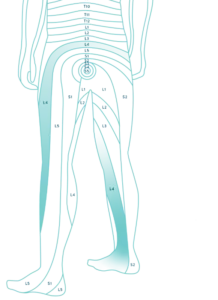
DORSAL ROOT GANGLION STIMULATION (DRG):
Dorsal Root Ganglion Stimulation (DRG), along with Spinal Cord Stimulation (SCS), also represents one of the most advanced techniques in the field of Pain Management. Most of the concepts applicable to the SCS are also true for the DRG. The major difference is that “Trial” and “Permanent Implant” leads are positioned along the individual nerves branching out from the spinal cord rather than the spinal cord itself. Lead positioning along individual nerves allows for very targeted pain relief. Please, visit www.abbott.com/consumer/neuromodulation.html to learn more about this pain management technology.
Conditions Treated:
Dorsal Root Ganglion Stimulation is commonly recommended for patients with the following conditions:
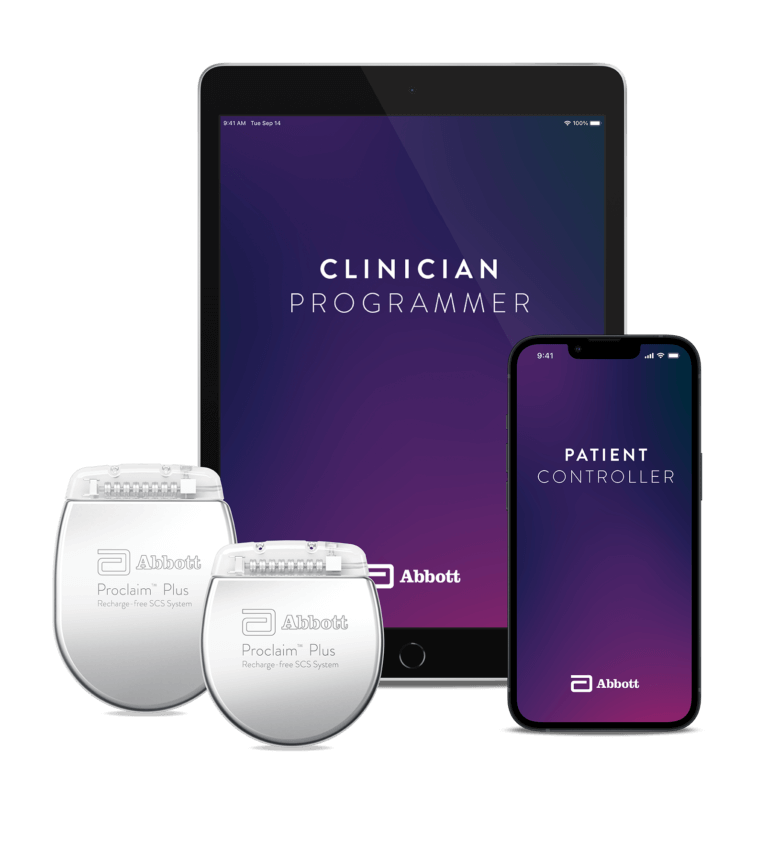
What to Expect:
Spinal Cord Stimulation and Dorsal Root Ganglion Stimulation: “Trial” procedure length 20-30min. Patients start experiencing significant pain relief almost immediately following the procedure. Please note that if IV sedation is requested, the patient would need to bring a driver with them on the day of the procedure. Please call us at (912) 910-3777 or send us a web inquiry if you have additional questions about this procedure and how it can benefit you.
Description:
Knee “Gel” Injections are appropriate for patients who didn’t get sufficient knee pain relief following two knee steroid injections. Knee “Gel” Injections provide immediate lubrication and cushioning of the knee joint, alleviate knee pain, and enhance the natural ability of the knee to move smoothly. These injections can be repeated every 6 months.
Conditions Treated:
Knee “Gel” Injections are commonly recommended for individuals with the following conditions:
What to Expect:
Procedure length: <5min. Patients start experiencing significant pain relief within 3-5 days. The expected duration of pain relief is 6-12 months. If requested by the patient, this procedure can be done with IV sedation. Please note that if IV sedation is requested, the patient would need to bring a driver with them on the day of the procedure.
Description:
Joint Injections are used to deliver a mixture of corticosteroid medication and a local anesthetic into painful joints. Local anesthetic provides immediate pain relief, while corticosteroid medication decreases inflammation within the joint. Occasionally, Joint Injections need to be repeated to achieve durable pain relief.
Conditions Treated:
Joint Injections are commonly recommended for patients with the following conditions:
What to Expect:
Procedure length: <5min. Patients start experiencing significant pain relief within 2-3 days. The expected duration of pain relief is 3 to 6 months. If requested by the patient, this procedure can be done with IV sedation. Please note that if IV sedation is requested, the patient would need to bring a driver with them on the day of the procedure.


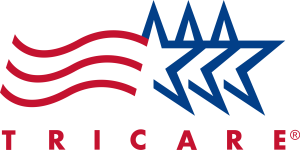




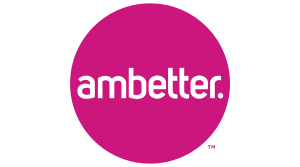

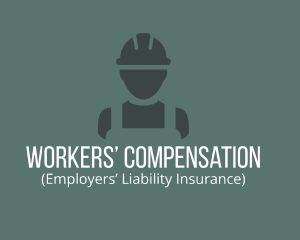
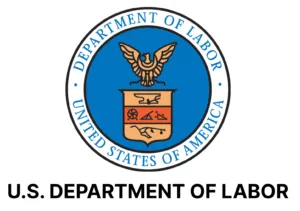
State-of-the-art equipment, evidence-based practices, and a comprehensive treatment approach to help you get better.
Our physicians are fellowship-trained and are ready to provide all patients with compassionate, empathic, and safe care.
We collaborate closely with local surgeons, physical therapists, and mental health counselors to expedite your recovery.
Our Locations
8:00 a.m. to 5:00 p.m.
Closed weekends & holidays